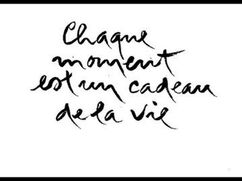-
Les avantages de la respiration contrôlée
Many maladies, such as anxiety and depression, are aggravated or triggered by stress. “I have seen patients transformed by adopting regular breathing practices,” says Dr. Brown, who has a private practice in Manhattan and teaches breathing workshops around the world.
When you take slow, steady breaths, your brain gets the message that all is well and activates the parasympathetic response, said Dr. Brown. When you take shallow rapid breaths or hold your breath, the sympathetic response is activated. “If you breathe correctly, your mind will calm down,” said Dr. Patricia Gerbarg, assistant clinical professor of psychiatry at New York Medical College and Dr. Brown’s co-author
Dr. Chris Streeter, an associate professor of psychiatry and neurology at Boston University, recently completed a small study in which she measured the effect of daily yoga and breathing on people with diagnoses of major depressive disorder.
After 12 weeks of daily yoga and coherent breathing, the subjects’ depressive symptoms significantly decreased and their levels of gamma-aminobutyric acid, a brain chemical that has calming and anti-anxiety effects, had increased. The research was presented in May at the International Congress on Integrative Medicine and Health in Las Vegas. While the study was small and lacked a control group, Dr. Streeter and her colleagues are planning a randomized controlled trial to further test the intervention.
“The findings were exciting,” she said. “They show that a behavioral intervention can have effects of similar magnitude as an antidepressant.”
Controlled breathing may also affect the immune system. Researchers at the Medical University of South Carolina divided a group of 20 healthy adults into two groups. One group was instructed to do two sets of 10-minute breathing exercises, while the other group was told to read a text of their choice for 20 minutes. The subjects’ saliva was tested at various intervals during the exercise. The researchers found that the breathing exercise group’s saliva had significantly lower levels of three cytokines that are associated with inflammation and stress. The findings were published in the journal BMC Complementary and Alternative Medicine in August.
Here are three basic breathing exercises to try on your own.
Coherent Breathing
If you have the time to learn only one technique, this is the one to try. In coherent breathing, the goal is to breathe at a rate of five breaths per minute, which generally translates into inhaling and exhaling to the count of six. If you have never practiced breathing exercises before, you may have to work up to this practice slowly, starting with inhaling and exhaling to the count of three and working your way up to six.
PhotoCredit Andrew Rae
1. Sitting upright or lying down, place your hands on your belly.
2. Slowly breathe in, expanding your belly, to the count of five.
3. Pause.
4. Slowly breathe out to the count of six.
5. Work your way up to practicing this pattern for 10 to 20 minutes a day.
Stress Relief
When your mind is racing or you feel keyed up, try Rock and Roll breathing, which has the added benefit of strengthening your core.
PhotoCredit Andrew Rae
1. Sit up straight on the floor or the edge of a chair.
2. Place your hands on your belly.
3. As you inhale, lean forward and expand your belly.
4. As you exhale, squeeze the breath out and curl forward while leaning backward; exhale until you’re completely empty of breath.
5. Repeat 20 times.
Energizing HA Breath
When the midafternoon slump hits, stand up and do some quick breathwork to wake up your mind and body.
PhotoCredit Andrew Rae
1. Stand up tall, elbows bent, palms facing up.
2. As you inhale, draw your elbows back behind you, palms continuing to face up.
3. Then exhale quickly, thrusting your palms forward and turning them downward, while saying “Ha” out loud.
4. Repeat quickly 10 to 15 times.
-
Commentaires











Prenez une profonde respiration, sentez l'expansion de votre ventre.
Pause. Expirez doucement en comptant jusqu'à cinq. Répéter quatre fois.
Vous venez de calmer votre système nerveux.
La respiration contrôlée, comme celle que vous venez de pratiquer, réduirt le stress, augmente la vigilance et stimule votre système immunitaire. Pendant des siècles, les yogis ont utilisé le contrôle de la respiration, ou pranayama, pour améliorer la concentration et la vitalité.
La science commence tout juste à montrer que les bienfaits de cette pratique ancienne sont réels. Des études ont constaté, par exemple, que les pratiques de respiration peuvent aider à réduire les symptômes associés à l'anxiété, l'insomnie, le syndrome de stress post-traumatique, la dépression et le trouble déficitaire de l'attention.
Comment la respiration contrôlée peut favoriser la guérison reste une source d'étude scientifique. Une théorie est que la respiration contrôlée peut changer la réponse du système nerveux autonome du corps, qui contrôle les processus inconscients tels que le rythme cardiaque et la digestion ainsi que la réponse au stress du corps.Respirez consciemment active le système nerveux parasympathique, ce qui ralentir la fréquence cardiaque et amène un sentiment de calme. Le système sympathique contrôle la libération des hormones du stress comme le cortisol.